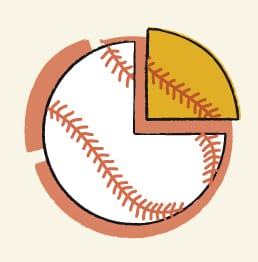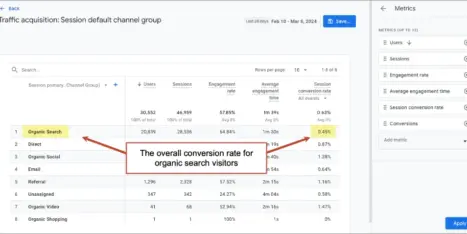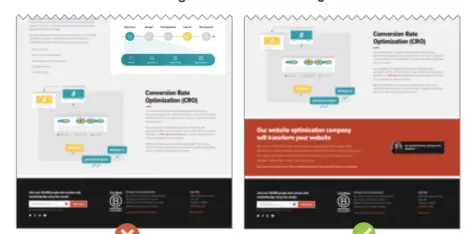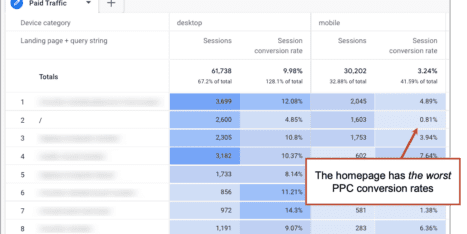Baseball and web marketing have something in common: statistics. There are a lot of people using those statistics to make decisions that impact results in a big way.
When Billy Beane of the Oakland A’s found better ways to read those statistics, he made better decisions. So much better that Oakland was competitive with the larger market teams that spent more than 3 times as much on player salaries. You may be familiar with the book Michael Lewis wrote about him, and Brad Pitt played him in a movie.
Billy Beane demonstrated that the commonly used statistics RBI’s (runs batted in) and batting average were inferior predictors of wins. Instead, he foc used on on-base percentage and slugging percentage. Let’s take a hard look at three statistics in your analytics, and we’ll see why they’re misleading at worst and irrelevant at best.
used on on-base percentage and slugging percentage. Let’s take a hard look at three statistics in your analytics, and we’ll see why they’re misleading at worst and irrelevant at best.
Bounce Rate
Everyone watches it in hopes that it will go down. It’s the percentage of people who leave the site after seeing just one page. It’s right there on your dashboard when you log into Google Analytics. So it must be important, right? Not necessarily.
(Exception: Low bounce rates are very important to websites that are doing a lot of PPC marketing.)
Are bounce rates important?
Your bounce rate doesn’t matter, at least not for most sites. Why not? Because some of the most important activities in content marketing – blogging, social media, email marketing – result in a higher bounce rate.
- Example: A bounce rate of 70% is high, right? It means 7 in 10 visitors see only one page. But Chris Brogan, arguably one of the most successful web marketers on the Internet, has a bounce rate of 72% (source: Alexa.com data on chrisbrogan.com) This is a genuine marketing superstar with fortune and glory aplenty. Why is his bounce rate so high? It’s because he’s so good.
If your bounce rate is below 65%, it’s too low. You’re not active enough in web marketing. Get blogging, get your newsletter out, be more active in social media, and your bounce rate will increase.
Additional read: Are bounce rates important? What is a good bounce rate?
Average Pages Per Visit
This isn’t an irrelevant statistic, but it’s easy to misinterpret. Ideally, this number isn’t high or low. It’s a “Goldilocks” metric. For lead generation sites, the number should be between 2 and 5 (for ecommerce websites, it should be between 3 and 7). It shouldn’t take more than five pages to drop in, learn something, get to know you a bit, and decide if they’re interested.
Redesigning a website often reduces the number of pages per visit, since the improved design helps people find information more easily and efficiently. Ironically, as a website owner, you should seek to reduce the number of pages per visit through good design and clear navigation, thereby reducing the total number of page views.
(Exception: A high average pages per visit is important for sites that generate revenue through advertising.)
New vs. Returning Visitors
It’s that big blue and green pie chart you see as soon as you log into Google Analytics. Surely this is important, right? Nope!
It’s a nice looking chart, but I’ve never been able to make a meaningful decision from this statistic. It’s inherently misleading because it can always be read as both good or bad.
Percentage of new visitors is high:
- Great! Your marketing outreach is working and you’re finding new people.
- Bad! Your old visitors aren’t coming back.
Percentage of returning visitors is high:
- Great! Previous visitors are coming back.
- Bad! Your outreach isn’t working and you’re not finding new people.
Another problem is that it doesn’t really measure visitors, it measures devices. If I visit your site from work, home and my phone, I’m counted as three unique visitors… only I’m not.
So how do you make a good decision based on an ambiguous, inaccurate metric? You can’t. Ignore it.
Final Score
If you ignore the distractions and focus on what’s really important, you’ll filter out the noise, make better choices and drive better results. Play Moneyball with your analytics and before long, Brad Pitt will be playing you on the big screen.
What stats do you find most important for your site?




